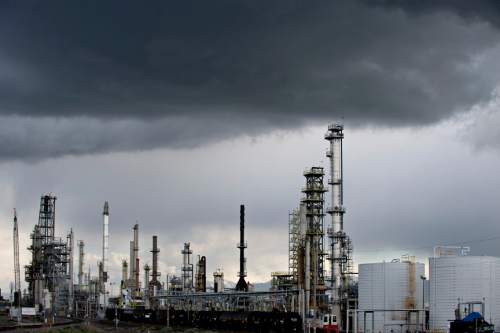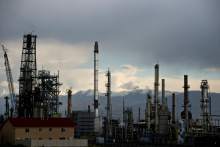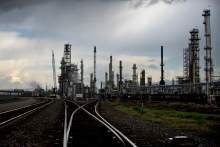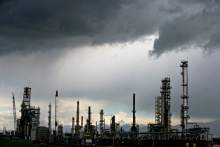This is an archived article that was published on sltrib.com in 2015, and information in the article may be outdated. It is provided only for personal research purposes and may not be reprinted.
Before Big West Oil LLC acquired its North Salt Lake refinery in 1986, the plant's former operator dumped or spilled numerous hazardous wastes at the site, a once-common practice that became closely regulated in the early 1980s under new federal laws.
Those forgotten chemical sludges have continued to haunt Big West over the years because the company failed to properly clean up and close the spots where they were dumped, according to newly released documents from the Utah Department of Environmental Quality.
Big West now has agreed to a rigorous monitoring and remediation plan to resolve concerns that contaminated soils on its 150-acre property at 333 W. Center St. could affect groundwater. The DEQ posted the proposed settlement on Thursday, opening a public comment period through June 16.
The ground under and around the refinery, which process 35,000 barrels a day, has been contaminated, but monitoring has turned up no evidence that contaminated water has migrated off the property, according to Rolf Johnsson of the Division of Solid and Hazardous Waste.
The DEQ's chief concern was a 2-acre dump, known as a "land treatment area," where prior operator Husky Oil Corp. deposited sludges and other hazardous wastes between 1962 and 1982.
"They completed 30 years of groundwater monitoring associated with that unit. We are gearing them up to another 30 years of monitoring. That's a lot of effort," he said. "It provides a road map on how they will provide documentation to show the level of contamination at the site and ensure at the end of the day that it is protective of the environment and human health."
Messages left with Big West executives were not returned Tuesday.
The five refineries along Interstate 15 near the Salt Lake-Davis county line have had issues with old hazardous waste dumped in an era when standards were lax to non-existent. But Big West, which has struggled with bankruptcy, mishaps and environmental compliance problems, is the last to get these waste issues resolved.
A pipeline leak released diesel fuel in 2008 and last month a tank "boiled over," spilling 18,000 gallons of crude, according to DEQ reports. In 2012, Big West agreed to a fine and $18 million in upgrades to resolve federal allegations that its emissions violated the Clean Air Act.
Over the years at the refinery, 43 other sites have been identified that could have been contaminated by hazardous materials. For example, when an old administration building was undergoing renovation, excavators discovered the ground around it was contaminated and the project was relocated to a cleaner place. Under the settlement, these sites will be investigated and cleaned up, if necessary, by 2020, Johnsson said.
The land will remain tainted but usable for some purposes.
"They have to put a notice on a deed and have restrictions on how they can use that land. They are not going to clean this up to a degree that you could put homes out there, but it will be cleaned up to a level that it is appropriate for industrial use. There will be restrictions on use of groundwater. You wouldn't be able to dig the soil and take it to another site," Johnsson said.
"They have been proactive," Johnsson added. "They say they want to have the data on their website to keep people aware of what's going on out there."
Under laws adopted in the 1980s, refiners' hazardous wastes are transported to facilities licensed to incinerate them or place them in landfills. Big West is among the state's leading generators of hazardous waste, sending more than 1,000 tons a year to facilities operated by Clean Harbors and other licensed processors, according to DEQ.









